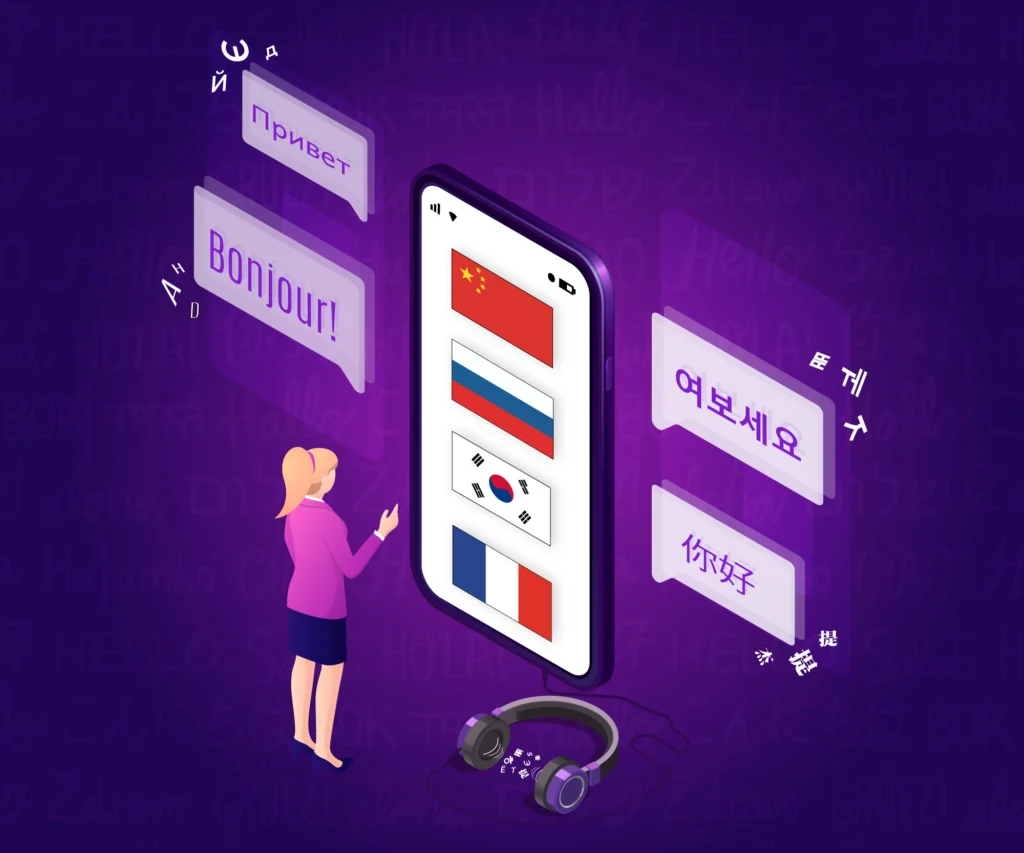The ability to effectively communicate in more than one, or even two, languages are rapidly becoming essential in every industry. Working with people from various cultures and countries is nothing new in today’s data-driven, digital-first world. On the other hand, finding the time and money for language learning courses can be difficult. However, with some free language learning apps, you can also become someone like the four-year-old polyglot speaking SEVEN languages in the show Little Big Shots. I tried four language-learning apps to learn German, and here is my checklist that you can bookmark for later use.
The top language-learning apps
Learning a new language through an app is especially beneficial because you’ll always have those instructions at your fingertips. Let me share my top picks as I found these apps have rightly pitched into language learning challenges. Plus, these have exciting features to meet various learning needs. While these apps have paid levels to unlock, you can also get excellent training with their free versions. So, let’s look at the list below:
(1) Memrise
With over 200 languages available, Memrise will likely have the next language you want to learn. Co-created by three masterminds, neuroscientists Greg Detre, Ed Cooke, and Ben Whately, the app Memrise emphasises maximum vocabulary acquisition. The language-learning app’s primary feature is a study method called spaced repetition, which refers to reviewing materials at a specific interval. Sign up using Google, Facebook, or Apple, whichever you prefer. In addition, this app records the days and times for all your lessons.
What impressed me the most was the video footage of locals speaking the language. This feature is undoubtedly unique to very few language-learning apps. You can even replay the videos repeatedly to notice how they move their mouths while pronouncing the words. This app also details variations, conversational forms, and tonal differences to use with each expression. However, please note that you can access some units only after becoming a premium member.
(2) Duolingo
DuoLingo, possibly the most well-known free language learning app available, has secured the second rank in the list for all the right reasons. Created by German-Guatemalan professor Luis von Ahn and Severin Hacker, his post-grad student in Pittsburgh, Pennsylvania, this app currently has millions of users. You can choose between 100 languages, including High Valyrian, Conlangs, and Klingon. In addition, there is an option to take a course designed for people whose first language is not English. As a result, DuoLingo has a global reach that no other free language app can match.
Since I had used Duolingo a couple of times before, I noticed that they had added a few more features. For example, you will get a guidebook with keyphrases and grammar tips for each lesson. Apart from that, you will also get excellent visual learning tools that will keep you hooked. Additionally, you will get an audio and microphone exercise feature to hone your pronunciation.
(3) Drops
With Drops, you can learn 45+ languages, and gamification is the most attractive feature of this app, created in 2015. Kahoot!, a quiz game company, owns this app which features games that streamline your learning process. You will enjoy game features like a word-finder, matching words with pictures, finding right or wrong, etc. However, the real fun happens when the exercises get harder as you progress.
Please note you can only learn for five minutes, and there is a waiting span of ten hours for your next lesson. I assume this is how the app got its name because you can learn in five-minute drops. Though it sounds limited, this strategy pushed me further to learn faster and make the most out of the five-minute lesson.
(4) Mondly
Mondly is a creation of two brothers, Tudor Iliescu and Alexandru Iliescu, who founded this Romanian company in 2013. It has 41 languages to offer; this can be your best pick if you are looking for a more traditional approach.
You can access the first unit for free. Start with learning different words like family members, times, days, etc. Each lesson has about four to eight words. Along with the words, this app also features sentence translation and picture association. Revise your newly learned phrases at the end of each lesson.
I also loved the hands-free session it offers while reviewing the lessons. After completing each lesson unit, I got a conversation section where I could practice verbalising the phrases I learned. The app also has a vocabulary section that helps me listen to the entire conversation.
Gamification is another exciting feature of Mondly. You will get thirteen points per lesson, and the app will let you know your national or global position. Plus, the notifications are pretty clickbait! I loved the ‘Don’t touch this! It will make you learn more!’ pop-ups.
My key takeaways to help you choose from these language-learning apps
Here are the main points to consider while you choose from these apps:
- If you want to learn as much as you can as quickly as possible, Duolingo is your best bet.
- If you’re incredibly busy and have little time for attention, Drops is for you.
- A more conventional audience would enjoy Mondly.
- Memrise can help you improve your understanding of regional pronunciations and expressions.
Which of these language-learning apps have you used? If you have a favourite, let us know. And best of luck on your upcoming polyglot journey!

